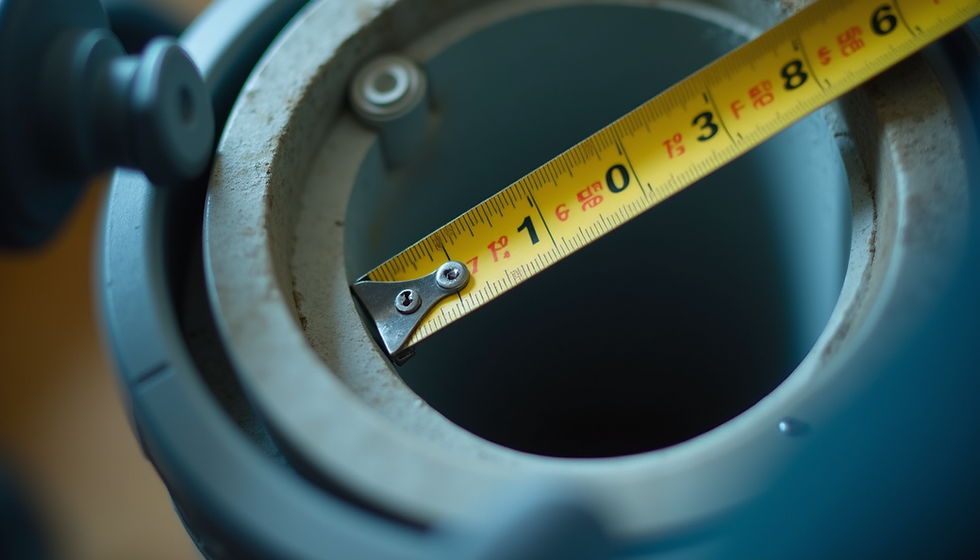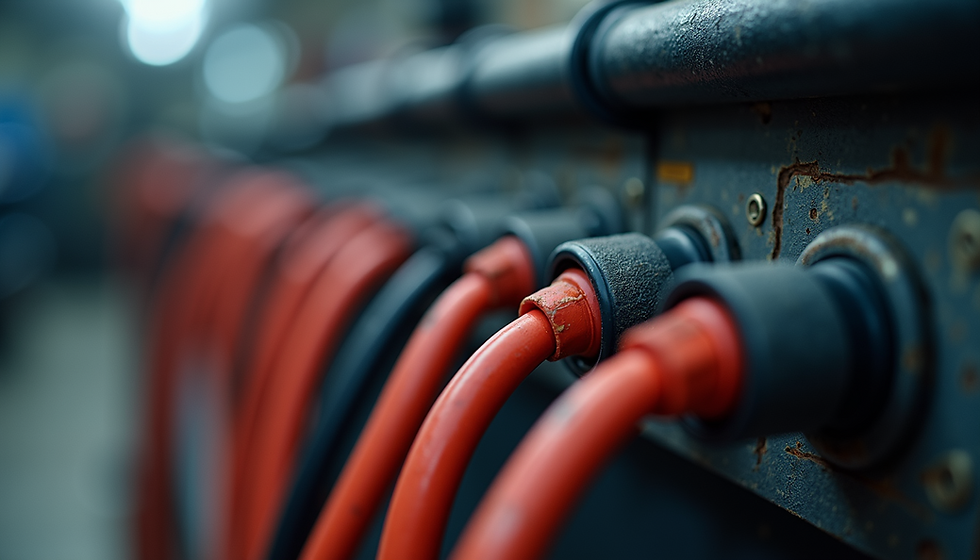Customizing Band Heaters for Unique Applications: A Guide to Choosing the Right Type
- Heat Tech Systems
- Jul 24
- 4 min read
In today's varied industrial landscape, finding efficient heating solutions is crucial. While generic band heaters are widely available, they may not satisfy the specific demands of unique applications. Customized band heaters are designed to fit an application’s precise dimensions and heating requirements. This ensures optimal heat distribution, energy efficiency, and accurate temperature management.
This guide will help you understand how to customize band heaters effectively, focusing on using a configurator to meet your specific needs.
Understanding the Importance of Customization
Customizing band heaters begins with recognizing the unique demands of your application. Stock solutions often fall short, as they may not fit particular dimensions or temperature requirements. By choosing a customized band heater, you ensure:
Optimal Heat Distribution: Custom heaters ensure consistent heating across their entire surface area. This prevents hot or cold spots, which can affect product quality and performance.
Energy Efficiency: Tailoring heaters to match your application needs can lead to a reduction in energy consumption. For instance, companies that switched to customized solutions reported energy savings of up to 25%.
Precision Temperature Management: Customized solutions allow for more accurate and reliable temperature control, leading to enhanced product quality and reduced waste.
Factors to Consider When Customizing a Band Heater
Several key factors should be considered when customizing a band heater. Let’s take a closer look:
1. Type of Heater
Custom band heaters are primarily categorized as mica and ceramic. Each has specific advantages tailored to different applications.
Mica Band Heaters
Mica heaters offer a cost-effective choice, commonly used in industries that require moderate heat.
Temperature Limit: Mica heaters withstand temperatures up to 900 degrees Fahrenheit (480 degrees Celsius). They are often used in applications such as plastic injection molding and blow molding machines.
Cost Efficiency: Mica heaters tend to be less expensive, making them a solid choice for budget-conscious operations. For example, a standardized mica band heater may cost between $50 and $150, while customized options can be designed to match specific needs.
However, be aware that mica heaters may not perform well in high-temperature environments.
Ceramic Band Heaters
Ceramic heaters excel in settings that require high-temperature sources.
Temperature Limit: Ceramic heaters endure temperatures beyond 1,200 degrees Fahrenheit (650 degrees Celsius). This capability makes them suitable for processes like thermoplastic molding and metal processing.
Better Insulation: With superior insulating properties, ceramic heaters enhance energy efficiency, which can translate into up to 30% lower energy costs over time.
While they provide better temperature resilience, ceramic heaters are typically more expensive and rigid in terms of size customization.
2. Size and Dimensions
Accurate sizing is crucial for effective heat transfer. A secure fit ensures that the heater functions optimally and minimizes energy loss. It is advisable to measure the application area precisely, as even a small discrepancy can affect performance significantly.
3. Wattage and Power Requirements
The wattage of a band heater should align with its intended heating application. For example, a higher wattage can heat materials faster, which is beneficial in production settings where time is critical. However, confirm that your power supply can accommodate these demands to avoid operational interruptions.
4. Material Type
Depending on the environment and temperatures involved, you may need other materials, such as flexible silicone rubber or stainless-steel sheaths. Discuss specific material choices with your manufacturer to find the best fit for your needs.
5. Custom Features
Consider any specialized features that can enhance your band heater’s performance. These may include:
Thermal Insulation: This reduces heat loss and improves energy use.
Hoses and Fittings: This ensures compatibility with cooling systems or other configurations.
Temperature Sensors: These allow for precise monitoring of output temperatures.
Using the Configurator to Customize Your Band Heater
At Hi-Watt, we have streamlined the customization process through our user-friendly configurator. Here’s how to navigate it effectively:
Step 1: Select Heater Type
Start by choosing the type of band heater best suited for your application. Decide between mica or ceramic based on your specific requirements.
Step 2: Input Size and Dimensions
Accurately enter the measurements of the band heater. This step is vital for achieving the fit and heating effectiveness that your work demands.
Step 3: Determine the Required Wattage
Set the wattage according to heating needs. The configurator will help you choose the right power level for optimal performance.
Step 4: Choose Material and Custom Features
As you use the configurator, select the material and any custom features that enhance efficiency and functionality.
Step 5: Review and Finalize
After making all selections, carefully review your configuration. Confirm that it meets your specifications before finalizing the order.
Advantages of Customized Band Heaters
Investing in customized band heaters offers numerous benefits:
Enhanced Versatility: They adapt to various applications, from plastics to food processing.
Increased Efficiency: Optimized designs minimize energy waste while maintaining necessary temperatures.
Improved Longevity: Custom heaters, made to your specific needs, often have longer service lives and contribute to sustainability.
Better Quality Output: Accurate temperature control leads to superior product quality and less waste.
Final Thoughts
Customizing band heaters is essential for businesses dealing with unique heating applications. By understanding the differences between mica and ceramic heaters and effectively using a configurator, you ensure your heating solutions meet all requirements.
Investing in custom solutions enhances energy efficiency, improves heat distribution, and achieves precise temperature control in your operations. As industries evolve, tailored heating solutions play a vital role in driving innovation and maintaining efficiency.
Exploring the possibilities of customization allows businesses to address their unique heating challenges effectively. Embrace customization today to discover its transformative impact on your operations.




Comments